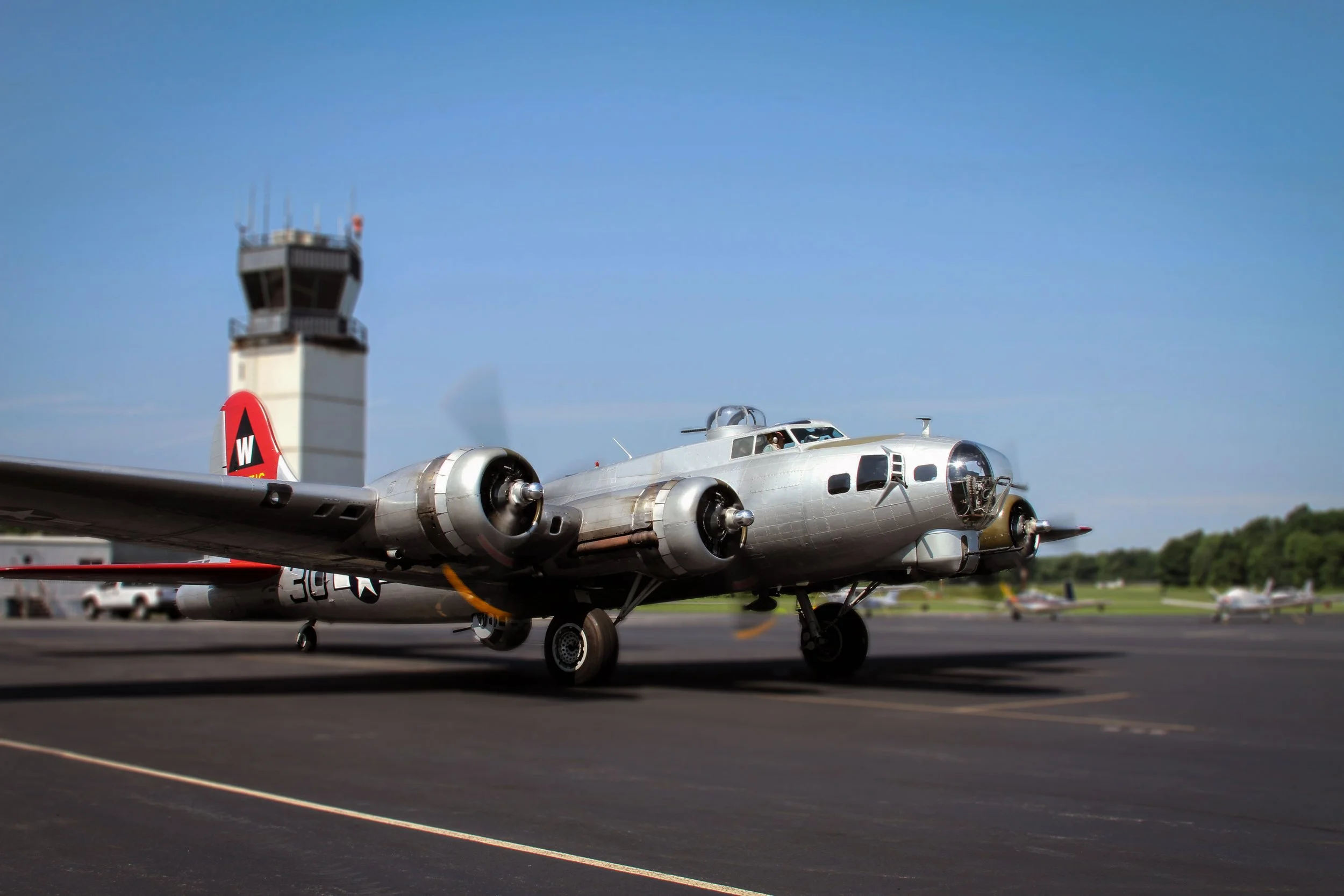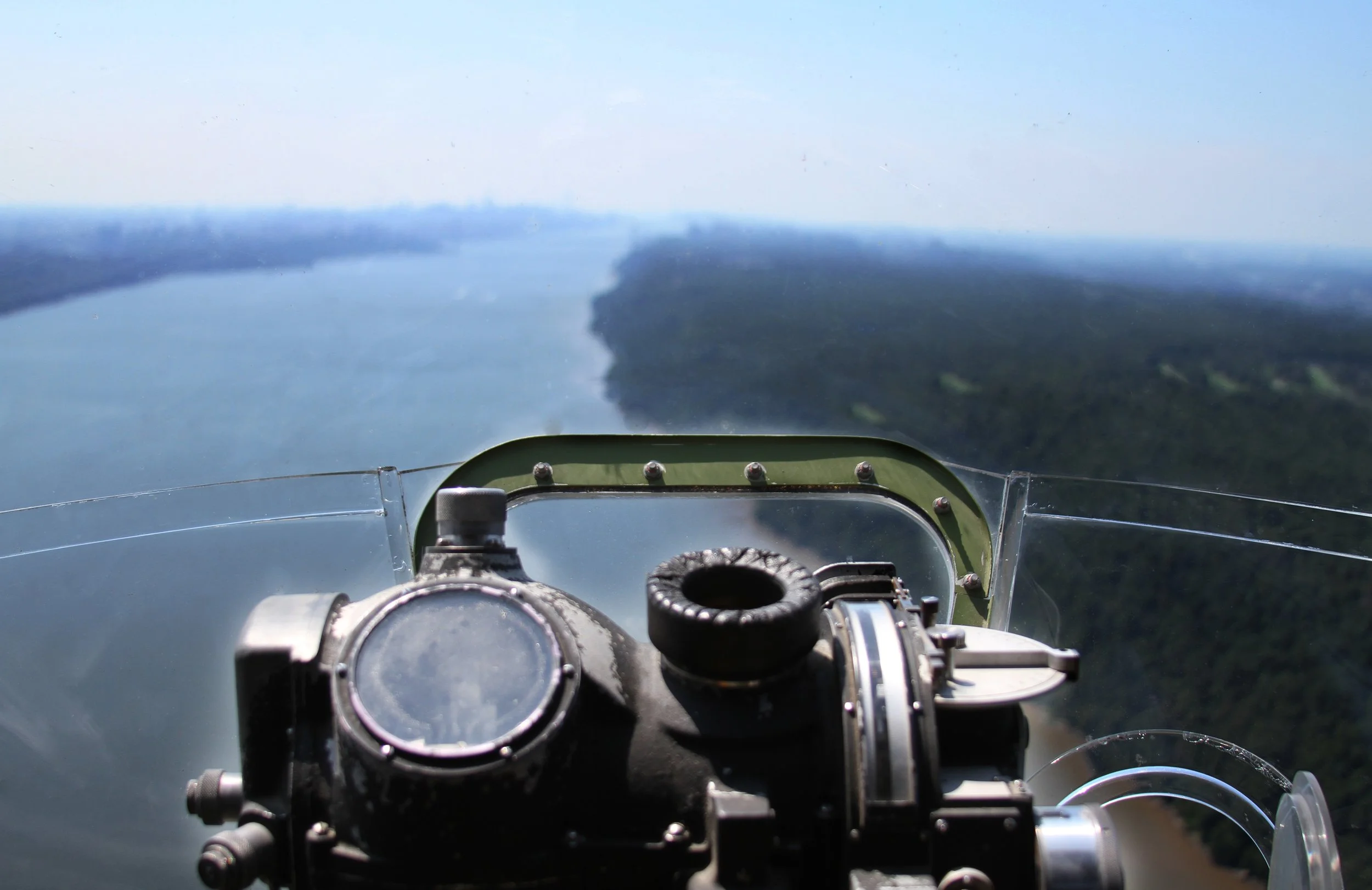Aluminum Overcast - Flying in a WWII B-17 Bomber with My Dad and Brother
It all begins with an idea.
Out of nearly 12,731 B-17 Flying Fortresses built during World War II, only about six are still airworthy and actively flying today. These legendary bombers once filled the skies over Europe — now they’re among the rarest aircraft still operating, living testaments to the men who flew them and the missions they carried out.
In August of 2012, I gave my dad one of the most unforgettable birthday gifts I could think of: a flight in a fully restored B-17 named Aluminum Overcast. My brother John and I joined him for the ride out of Fairfield, NJ — not just as a bonding experience, but as a shared tribute to one of our all-time favorite WWII planes.
Growing up, we were obsessed with the story of the Memphis Belle. Something about those old bombers — the design, the mission, the crews — always stuck with us. Whenever Aluminum Overcast would visit the local airport, we’d go check it out on the ground, walk through the fuselage, and dream about what it must’ve been like in the air. This time, we weren’t just looking — we were climbing aboard The B-17 “Aluminum Overcast” preparing for takeoff at Essex County Airport.
The Day of the Flight was a hot August day — peak summer — and all three of us were buzzing with excitement. Even though the plane had visited before, this was our first time actually taking to the skies in one. Up close, the B-17 looks muscular, intimidating, and oddly elegant. But what struck me most was how narrow it really is. In the movies, the fuselage always looks roomy — but inside, you’re practically crawling through a metal tunnel.
Before takeoff, The pilot gave us a quick — and slightly hilarious — safety briefing
“See those cables running the length of the fuselage? Don’t touch them. They control the flight surfaces. Unless you want to fly the plane, keep your hands off.”
“There was also an open ceiling panel toward the back where you could stick your head out mid-flight — though don’t with hats or cameras unless we wanted to donate them to the wind.”
The Flight Experience
Once those four massive radial engines roared to life, the power hit you immediately. You could feel it in your chest, pressing you back into your seat. The vibration, the wind, the roar — it was overwhelming in the best way.
The flight path took us from Fairfield out toward the Hudson River. From the windows, we could spot the NYC skyline, the George Washington Bridge, Giants Stadium. But the real moments — the ones that stuck with me — happened inside the plane.
At one point during the flight, I crawled under the pilots on my stomach and made my way to the very front of the aircraft — the bombardier’s position. From the plexiglass nose, I had a panoramic view of the Hudson River stretching out beneath us and the Manhattan skyline fading into the summer haze. It was breathtaking — like hanging in space, floating above history.
I sat down behind the Norden bombsight, staring through it just as young bombardiers once did. It hit me hard: the responsibility these 18 and 19-year-olds had, the precision expected of them, the stakes they faced on every mission. Thinking about the responsibility, the danger, the reality of war... and the fact that someone my age — or younger — had once stared down through this very same view, in combat. It’s hard to explain the feeling — imagining yourself in the boots of a kid barely out of high school, holding the fate of entire missions in your hands. Being in that spot, looking through that sight, was more than just a photo op — it was a moment of reverence.
Later, I stood behind the pilots and took one of my favorite shots of the day — both of them focused, hands steady on the yokes, banking the plane gently to the left. It’s a shot I’ll never forget capturing. From that vantage point, I could see the horizon tilting as we turned, the light spilling across the cockpit windows, and the aircraft responding like something alive.
There was no digital interface, no autopilot — just raw skill and decades of muscle memory guiding a 30-ton relic through the sky. Watching them fly that plane was like witnessing craftsmanship in motion, and for a moment, I felt completely transported to another time.
Meanwhile, my dad sat in the radio operator’s position, just behind the cockpit. He was fully immersed, taking it all in. John walked the full length of the aircraft during the flight, even crossing the narrow catwalk above the bomb bay — something that looks simple on the ground but feels very different when you’re 10,000 feet in the air.
I didn’t approach this flight like a traditional photo shoot. I brought my camera, yes — but mostly, I was just holding on and trying to absorb every moment. There are only a handful of these planes still flying. To be in one with my dad and brother — to share that moment of history and awe — was something I’ll never forget. Sometimes, the best shots aren’t just about light and composition — they’re about what they mean. And this experience? This was about family, legacy, and the deep, rumbling echo of four radial engines that carried more than just people — they carried history




